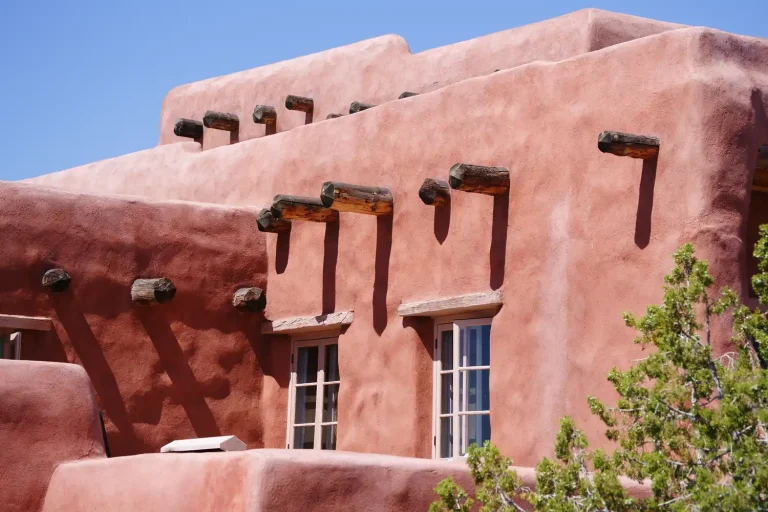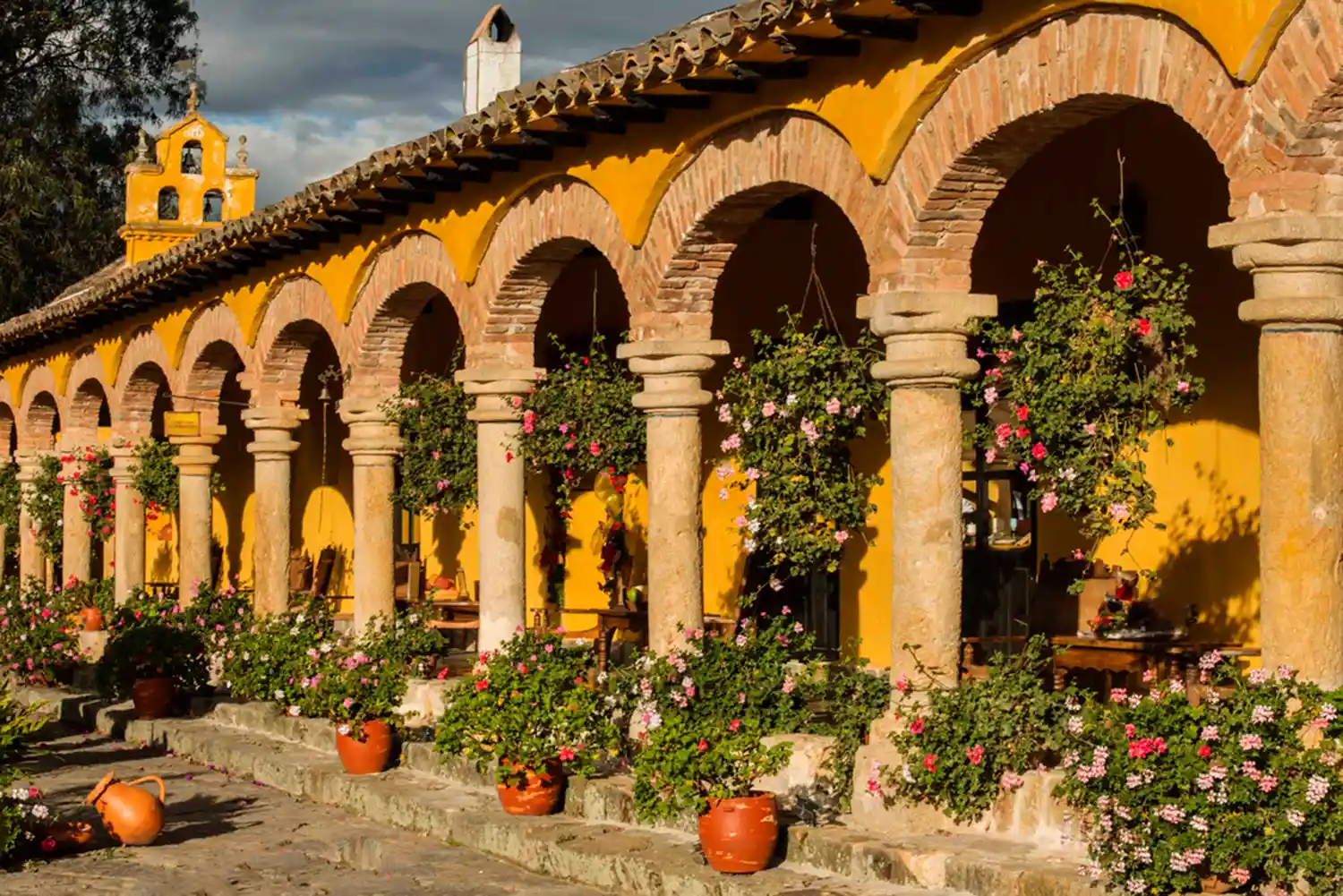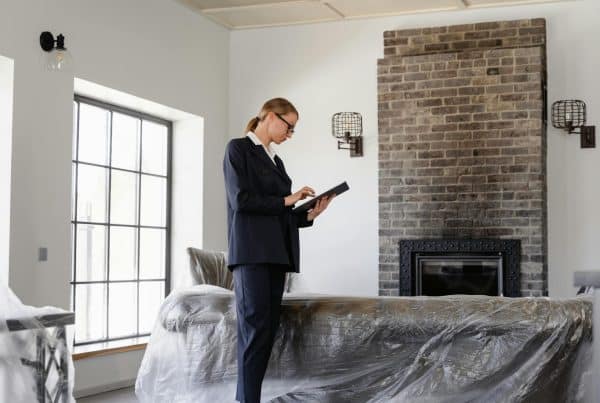Hacienda style homes have long impressed homeowners with their unique fusion of traditional Spanish colonial architecture, Mediterranean influences, and Mexican design elements.
Originating from the sprawling estates of colonial Mexico and the American Southwest, hacienda style homes are steeped in a rich cultural heritage, and their timeless appeal continues to resonate with modern homeowners today.
To learn more about hacienda style homes, continue reading our compilation of 9 fascinating facts. And if you’re considering purchasing a new home, don’t forget to explore our Home Search tool to find your dream home in the greater Las Vegas area.
Please note that selections for Hacienda style homes in Las Vegas are very limited, but there are Spanish, Mediterranean, and Ranch styles available. Homes in Las Vegas tend to take many features and influences from these styles while maintaining contemporary floor plans.
Quick Note: Hacienda Style Homes vs Spanish Style Homes. What’s The Difference?
Before we share the 9 facts about hacienda style homes, let’s first briefly cover the difference between hacienda and Spanish style homes to avoid confusion between the two. This is an important distinction to make.
Scale and Layout: Hacienda style homes tend to be larger with a more sprawling layout, reflecting their origins as working estates or plantations. Spanish style homes, for their part, while they can also be spacious, are more likely to be found in urban or suburban settings.
Ornamentation: Additionally, Spanish style homes often have more decorative details that are influenced by the Baroque and Moorish architectural traditions, whereas hacienda style homes lean towards rustic and simple decor.
Functionality: Finally, haciendas traditionally were built with an estate or farm in mind, including areas for agricultural production and animal husbandry. This influences their layout and design to the present day. Spanish style homes, meanwhile, have more suburban and urban designs and functions.
Want to learn more about Spanish style homes? See our article 12 Interesting Facts About Spanish Style Homes.
Want To See Examples of Hacienda Style Homes? Check Out The Video!
9 Interesting Facts About Hacienda Style Homes
1. There Are Seven Main Types of Hacienda Style Homes
Traditional Hacienda – Traditional haciendas reflect the classic features of the original haciendas in Mexico and the American Southwest. These often include large central courtyards, thick adobe walls, and terracotta roof tiles. Additionally, traditional haciendas may feature wrought-iron fixtures, artisanal tilework, and even rustic hand-carved wooden doors.
Modern Hacienda – Modern haciendas incorporate modern design elements while retaining key characteristics like open courtyards. Modern styles typically include sleek architectural lines, large glass windows for natural light, and minimalist interiors that contrast with the traditional rustic elements.
Coastal Hacienda – Coastal haciendas are adapted for coastal environments and often feature open designs that allow for better ventilation. They may also include construction materials that make them resistant to humid or salty air. These homes often have larger outdoor living spaces and patios that take advantage of ocean views.
Desert Hacienda – Desert haciendas come with features such as deep porches and high ceilings to provide cooling and shade in arid environments. These homes also usually have exterior colors that reflect the earthy tones of desert environments. Xeriscaping, the use of drought-resistant plants, is a common feature in desert haciendas.
Ranch-Style Hacienda – Ranch-style haciendas utilize single-story layouts that are typical of ranch-style homes. These types of haciendas often incorporate large, open floor plans and wide corridors, and they may also feature rustic elements like exposed wooden beams and stone fireplaces.
Urban Hacienda – Urban haciendas adapt the typical hacienda home style to urban environments. These haciendas often feature smaller courtyards and compact architectural layouts suitable for city living. Despite the smaller footprint, they tend to maximize space through multi-functional areas, such as a combined kitchen and dining area. There are many kinds of urban haciendas with custom floor plans to meet different needs.
Luxury Hacienda – Luxury haciendas are upscale versions of the regular variety that emphasize luxury and spaciousness, often with premium materials and elaborate landscaping. They often feature master suites and gourmet kitchens and may also include high-end amenities such as outdoor kitchens, infinity pools, and custom artisanal details.
2. The Origins of Hacienda Style Homes Date Back to the 16th Century
Hacienda style homes originated during the 16th Century in Mexico and the American Southwest, in regions that were under Spanish rule at the time. They were heavily used in agriculture, mining, and cattle ranching and were typically owned by wealthy landowners.
Seen as symbols of wealth and status, hacienda style homes quickly grew in popularity, and by the 17th and 18th centuries, they had become a core part of local communities and rural and family life in many areas.
Their pragmatic and effective designs were another reason for their popularity. They were (and still are) good at offering protection from harsh winds, maximizing surveillance of the surrounding landscapes, and ensuring structural stability in varied weather conditions.
3. Courtyards Are a Hallmark of Hacienda Style Homes
One of the defining features of Hacienda style homes is the famous hacienda courtyard, which usually features central stone pavings, fountains, and lush vegetation.
Architecturally, hacienda courtyards integrate indoor and outdoor spaces by having rooms open directly into the center, where family and friends can mingle. The courtyards frequently utilize arches, colonnades, and beautifully designed stone pavings or intricate walkways to provide shade and open space for relaxation, dining, and entertainment.
In addition to these elements, hacienda courtyards often incorporate outdoor fireplaces or fire pits.
4. Thick Adobe Walls Help Insulate Hacienda Style Homes
One of the defining characteristics of Hacienda style homes is their thick adobe walls, which first came into use thanks to their excellent insulating properties back in the Spanish Colonial period.
The effectiveness of adobe walls as insulators depends on their mass. The wider the wall, the more thermal mass it has, and thus, the better it can function as a natural insulator. The air that’s trapped in the wall reduces the rate of heat transfer, which is particularly advantageous in climates with high day-night temperature variances.

Adobe walls and house exterior | Photo by Chuck Liang/Cscccl | CC Attribution-Share Alike 3.0 Unported
The effectiveness of adobe as insulation is also influenced by its external finish. Light-colored finishes reflect sunlight, which is helpful in sunny climates. Conversely, darker finishes can be used to absorb heat in cooler regions.
Hacienda style homes today are usually painted in earthy tones like terracotta and ochre but can also be white and are usually sealed by a protective coating to enhance their resistance to moisture and extend their lifespan.
In addition to insulation, a second advantage of adobe walls is their durability; they are notably resistant to weather and time. This makes them appealing to homeowners who are looking for something that will last.
5. Some Modern Haciendas Use Stone Walls Instead of Adobe
Did you know that some modern haciendas use stone walls instead of traditional adobe? This is because stone, with its natural durability, offers a few important advantages.
One, it provides excellent insulation but with added structural strength and resistance to weather elements. Two, it allows for a greater variety of textures and colors, enabling architects and builders to better customize how the homes look. Three, stone walls give a hacienda home an earthy feel that resonates well with modern design sensibilities.
Note: Not all modern haciendas use stone, as there are also unique advantages to sticking with a traditional style exterior. Take a look at this modern hacienda, which has a beautiful red exterior and a cozy modern interior!
6. Hacienda Style Homes Became Popular In The USA During The 1920s and 1930s
Hacienda style homes experienced a rise in popularity in the United States during the 1920s and 1930s. The revival was part of the broader Spanish Colonial Revival architecture movement, which gained momentum following the 1915 Panama-California Exposition in San Diego.
The exposition showcased buildings with Spanish and Mexican influences, sparking interest in these architectural styles across the States. As a result, this period saw the construction of numerous homes, hotels, and other buildings that featured the signature elements of hacienda style architecture.
7. Old World Haciendas Blend Spanish, Moorish, Gothic, and Renaissance Influences
Today’s Old World Haciendas are inspired by the grand estates of Spain and the picturesque homes scattered across the Mediterranean region during the Renaissance period. This is especially true of today’s Old World Haciendas that have upscale luxury floor plans.
Features of modern Old World Haciendas often include the following:
- Grand Spanish courtyards.
- Moorish-inspired tile work, carved wooden doors, and ornamental ironwork.
- Gothic architectural features like vaulted ceilings and pointed archways that contribute to spatial dynamics.
- Renaissance-era design principles that emphasize symmetry, proportion, and the integration of classical motifs.
See Photos of Old World Haciendas on Pinterest for inspiration and design ideas.
8. Hand-Painted Tiles Accentuate Many Hacienda Style Homes
Hand-painted tiles are a distinctive feature within many Hacienda style homes. Often found adorning walls, floors, and outdoor spaces, the tiles convey cultural influences with their Mexican or Spanish patterns.
Beyond their aesthetic value, hand-painted tiles also help protect surfaces from wear and moisture.
9. Hacienda Style Homes Have Small Windows
There are a few reasons why hacienda style homes have small windows.
One, they help reduce heat. Two, small windows contribute to the structure’s overall strength in homes made from adobe or stone. Before modern design techniques were utilized, larger openings could compromise a structure’s integrity.
Three, small windows also offered security and privacy, protecting the inhabitants from potential threats and the harsh outdoor elements. This was particularly important in remote or rural areas where hacienda estates were often located.
Find Homes In Las Vegas with The Real Estate Guy
Are you ready to find your dream home in the Las Vegas area? Want to learn more about us? If so, check out our Home page and see why so many people choose us.
Reminder: Selections for hacienda style homes in Las Vegas are very limited, but there are Spanish, Mediterranean, and Ranch styles available. Homes in Las Vegas tend to take many features and influences from these styles while maintaining contemporary floor plans.
Featured Image Source: Hacienda El Salitre Paipa, Boyaca
Photographer: Luisangelb
Source: Wikimedia Commons
License: CC BY-SA 4.0
Copyright © 2015 Luisangelb
This work is licensed under the Creative Commons Attribution-Share Alike 4.0 International license. To view a copy of this license, visit the link above. No changes were made to this image. Disclaimer: The use of this image does not imply endorsement by the photographer or Wikimedia Commons. The image is used solely for illustrative purposes in the context of discussing Hacienda style homes.
Blog Post Image Source: Painted Desert Inn
Photographer: Chuck Liang/Cscccl
Source: Wikimedia Commons
License: CC BY-SA 3.0
Copyright © 2012 Chuck Liang/Cscccl 2012
This work is licensed under the Creative Commons Attribution-Share Alike 3.0 Unported license. To view a copy of this license, visit the link above. No changes were made to this image. Disclaimer: The use of this image does not imply endorsement by the photographer or Wikimedia Commons. The image is used solely for illustrative purposes in the context of discussing Hacienda style homes.






